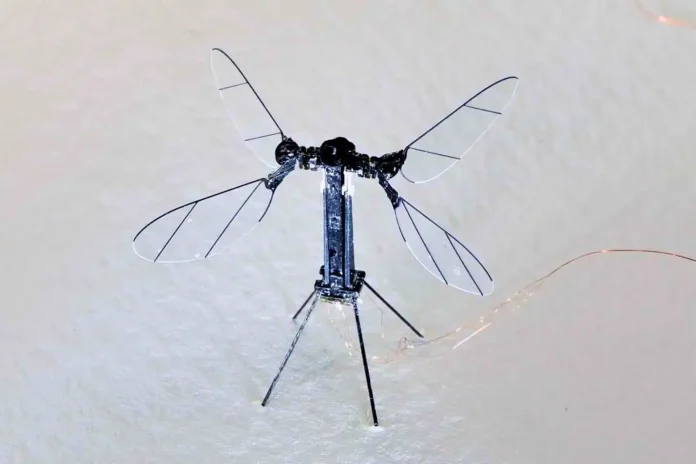The world of robotics is filled with excitement as researchers at Washington State University (WSU) develop two miniature wonders – the smallest and lightest fully functional micro-robots ever created by humans. These insect-inspired mini robots, a mini-bug and a water strider, could open doors to a future where robots handle tasks at a micro-scale, from artificial pollination to search and rescue missions. With the field of robotics becoming more innovative with each passing day, the future of tech is bright and promising.
Smaller than a Raindrop, Faster than a Snail
Imagine a robot weighing less than a dime and moving around at a fast six millimeters per second. That’s precisely what WSU’s mini-bug and water strider robots achieve. The mini-bug, tipping the scales at only eight milligrams, is the lightest of its kind, while the water strider, at 55 milligrams, is still a featherweight champion. While their speed might seem slow compared to their real-life insect counterparts (an ant, for example, can zoom a hundred times faster!), it’s a remarkable speed for robots of such minuscule size.
These Mini Robots Are Titans of Movement
The key to these mini robots’ impressive success lies in their innovative actuators, the tiny engines that make them move. Conor Trygstad, the lead researcher and PhD student in the School of Mechanical and Material Engineering, developed a new fabrication technique to miniaturize these actuators to less than a milligram each, a record-breaking success in itself.
“These actuators are the smallest and fastest ever developed for micro-robotics,” explains Néstor O. Pérez-Arancibia, the project’s lead investigator and Flaherty Associate Professor in Engineering at WSU.
The magic behind these actuators lies in a unique material called shape memory alloys. This fusion has a unique ability to remember and then return to its original shape when heated. Unlike traditional motors with complex moving parts, these shape memory alloys offer a more straightforward, more substantial solution.
A Powerhouse in Miniature
While shape memory alloys are typically too slow for large-scale robots, WSU’s team cleverly miniaturized the technology. The actuators are made of two hair-thin wires, each only 1/1000th of an inch in diameter. Applying a small current allows these wires to be heated and cooled easily and fast, enabling the mini robots to flap their fins or move their legs at a remarkable 40 times per second.
Even more impressive is that these tiny titans can lift over 150 times their weight. Do you want to know the best part about this innovation? They require minimal power to operate, making them ideal for long-term missions without big batteries.
From Inspiration to Innovation
Trygstad, an eager fisherman, drew inspiration for the water strider robot from his observations of these clever insects gliding across water surfaces. While the WSU mini robots currently use a simple flapping motion, the team aims to replicate the insect’s efficient rowing technique for even faster movement.
The future holds exciting possibilities for these excellent mini robots. Researchers envision robots like these assisting with tasks like artificial pollination, navigating disaster zones for search and rescue, or even performing delicate micro-surgeries. The possibilities are as vast as the imagination itself.
WSU’s mini robots are not just a technological accomplishment but a steppingstone towards a future where miniaturization unlocks a new world of possibilities. Tiny robots like these and Primer-V2 promote the way for a future where robots can explore, manipulate, and interact with the world at a scale never before imagined. The race for the smallest, fastest, and most versatile micro-robots is heating up. WSU’s mini-marvels have certainly taken the lead in this exciting race towards a future where robots are genuinely miniaturized wonders.



